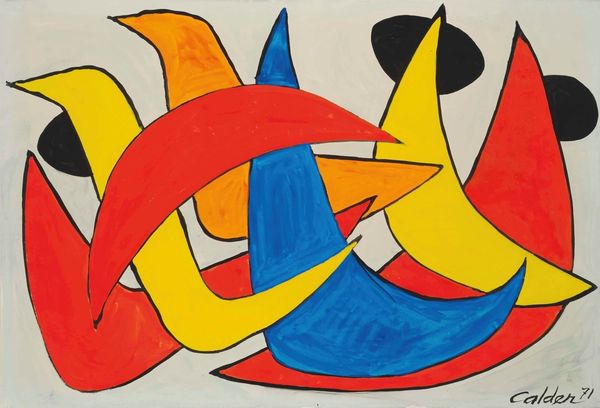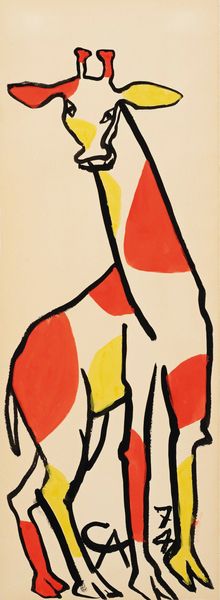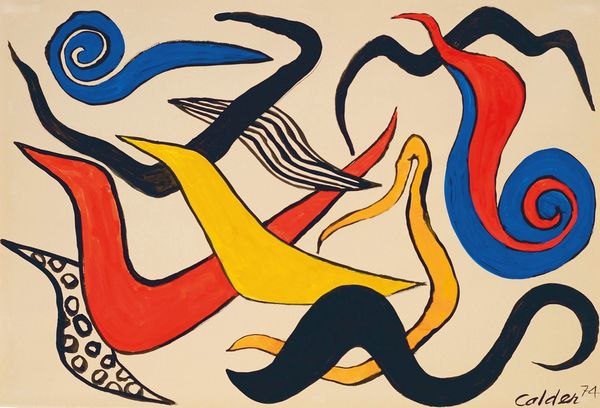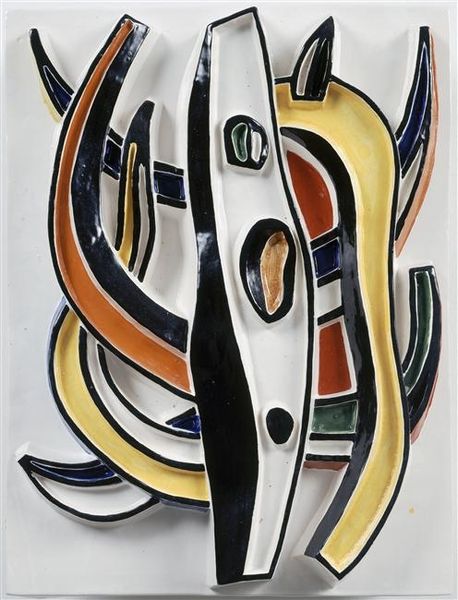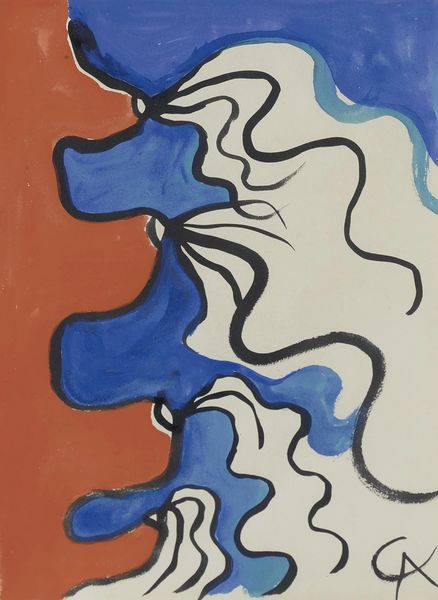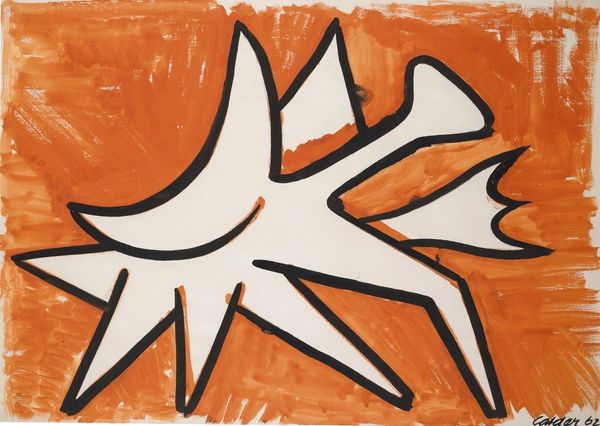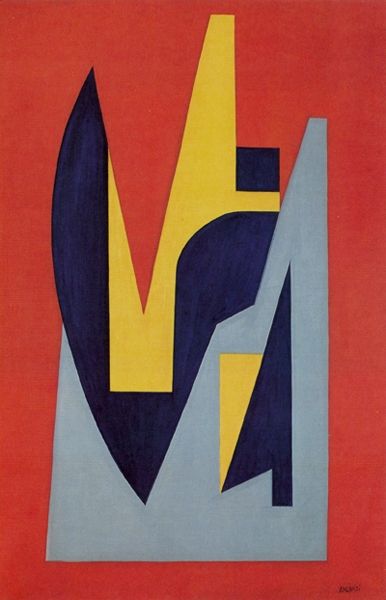
Copyright: Modern Artists: Artvee
Alexander Calder made Evolution in 1971 with gouache. It’s playful, graphic, and feels like a celebration of shapes dancing across the paper. Look at how Calder uses flat, bold colors—red, blue, and yellow—to define these organic forms. The black outlines give them a cartoonish quality, like cut-outs arranged in a spontaneous composition. You can sense his hand in the slight irregularities of the lines and the way the colors bleed into each other. The orange shape snaking through the middle especially stands out. It pulls the other shapes into orbit. The marks have been made with a thick brush. Each shape seems to balance the others, creating a sense of movement and potential, it's like a frozen moment in a joyful, ongoing process. Calder, best known for his mobiles, brought that same sense of dynamic balance and lightness to his works on paper. You can sense the legacy of artists like Joan Miro, who similarly explored biomorphic abstraction with a sense of childlike wonder. But Calder made it all his own. For me, this is a reminder that art is a conversation, an evolution of ideas passed down and transformed through each artist’s unique perspective.
Comments
No comments
Be the first to comment and join the conversation on the ultimate creative platform.
